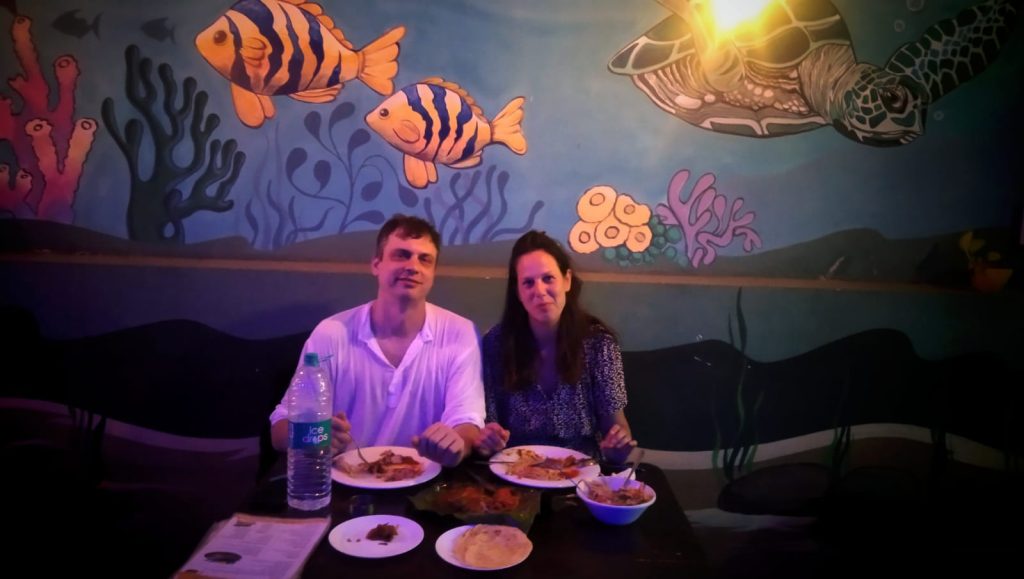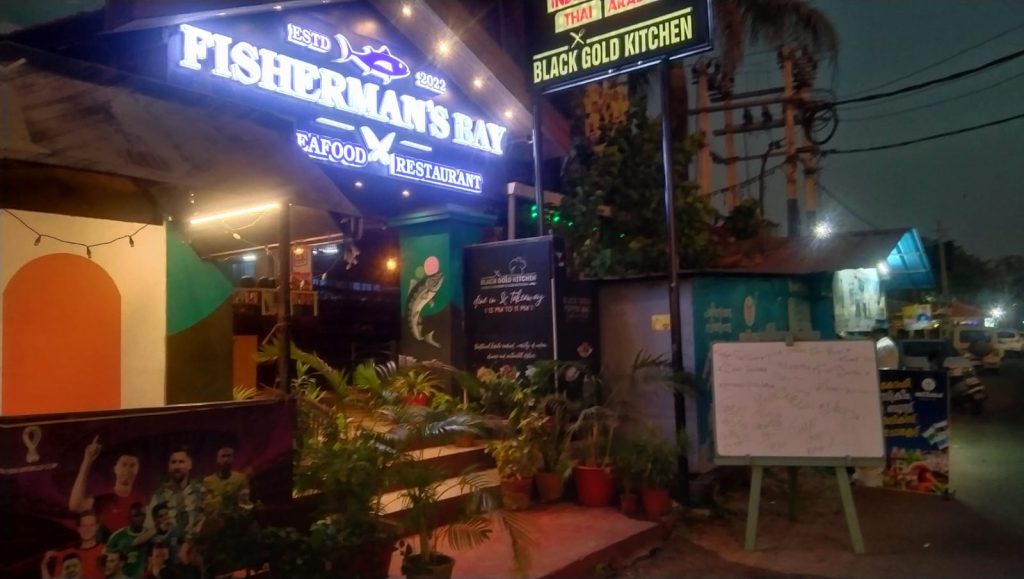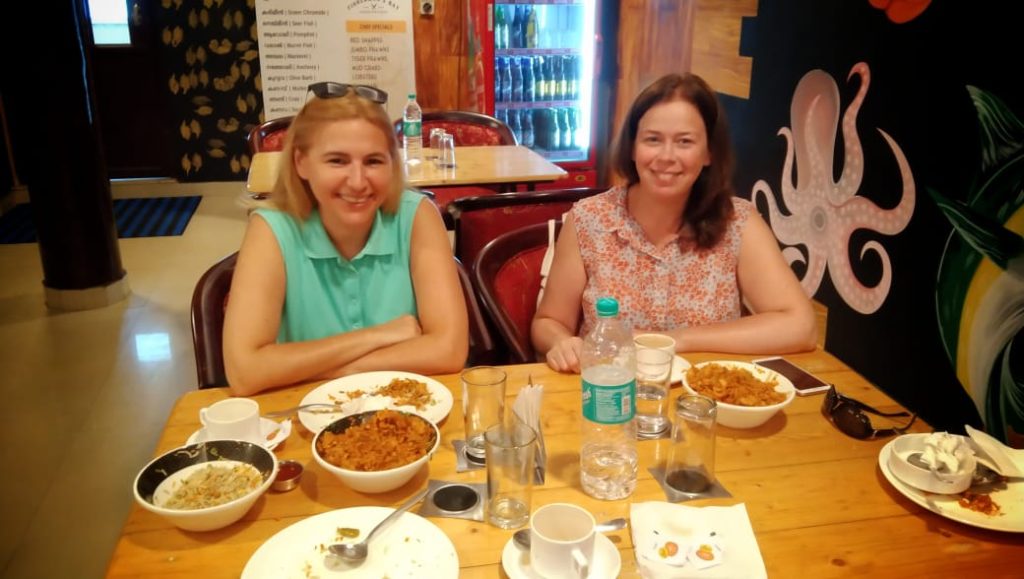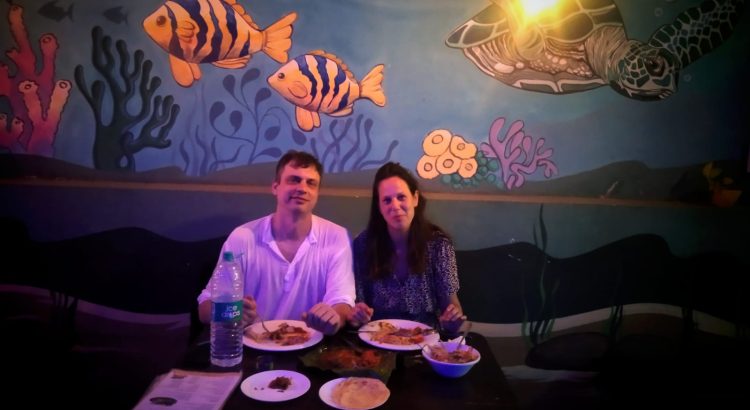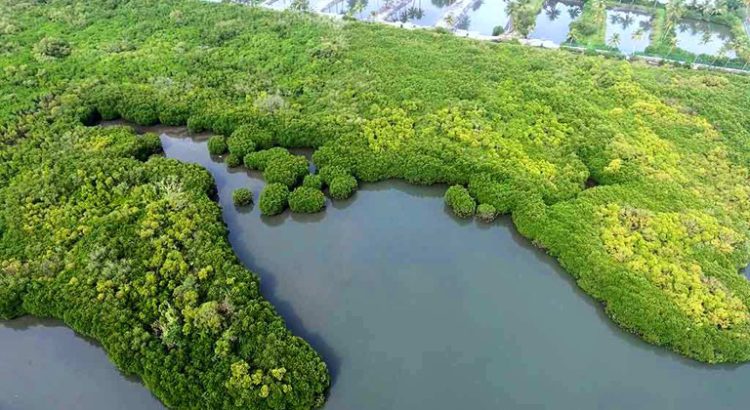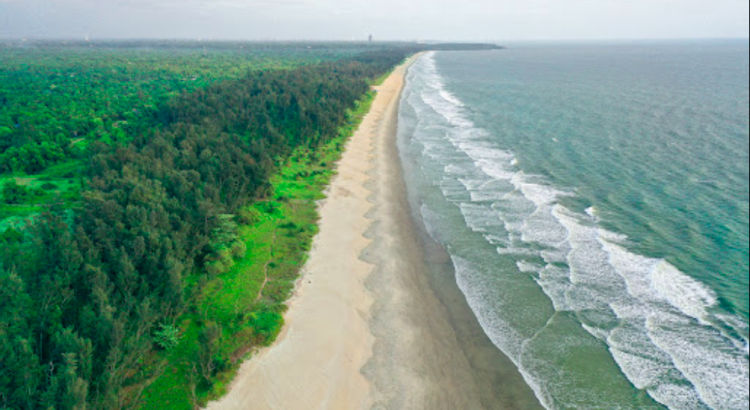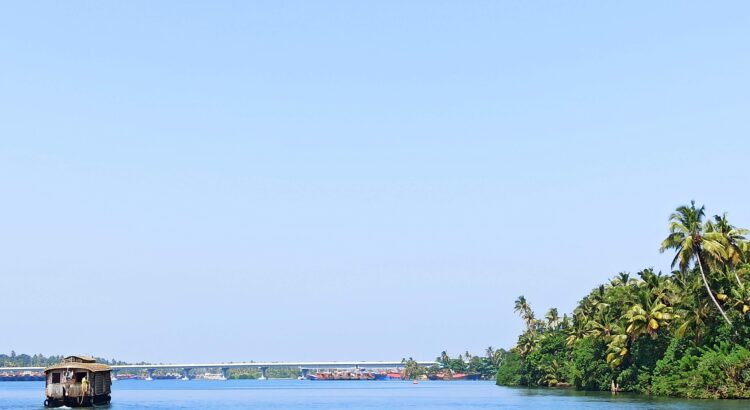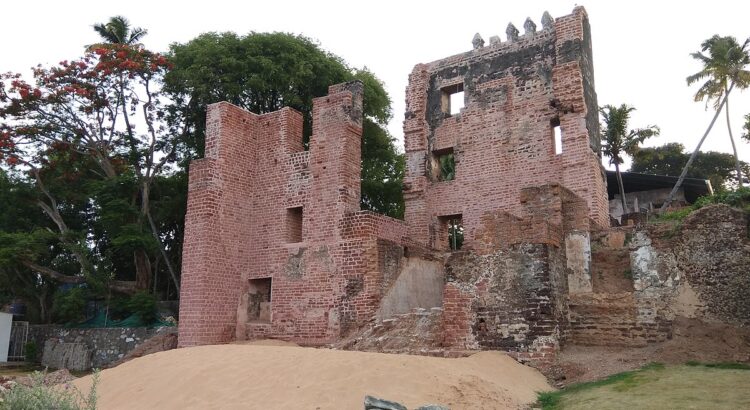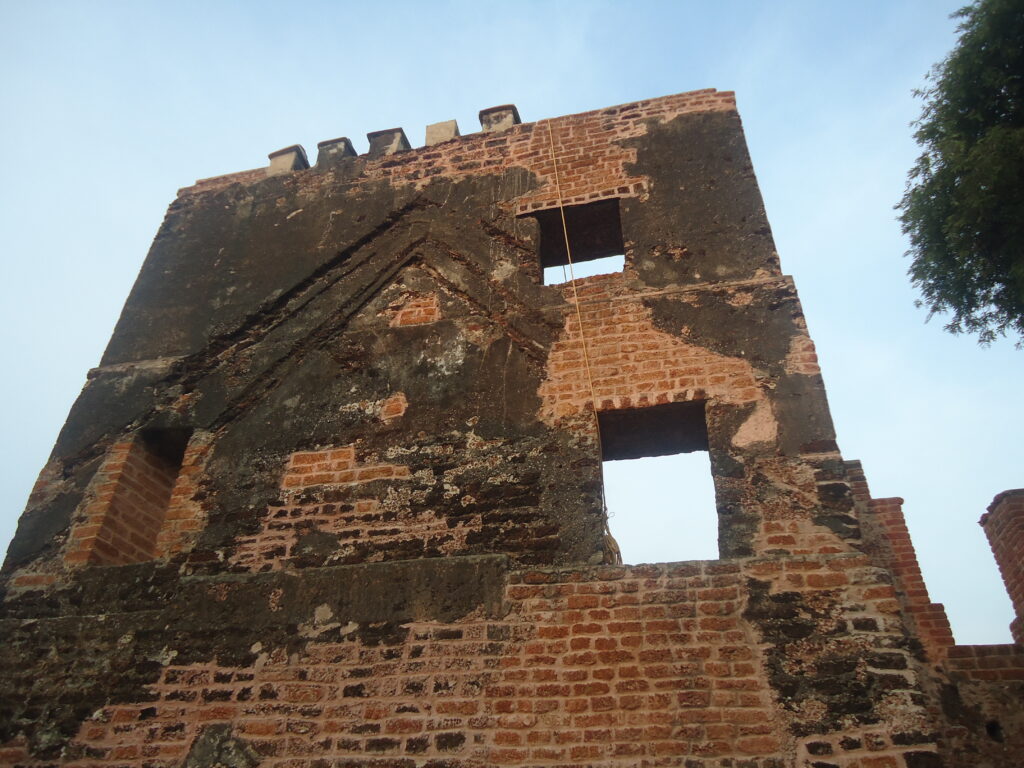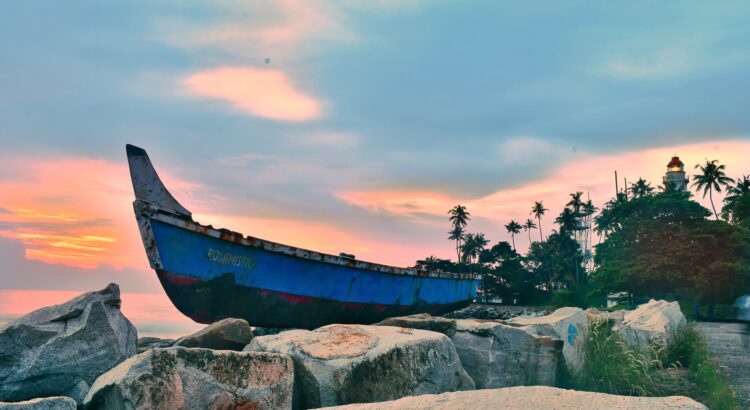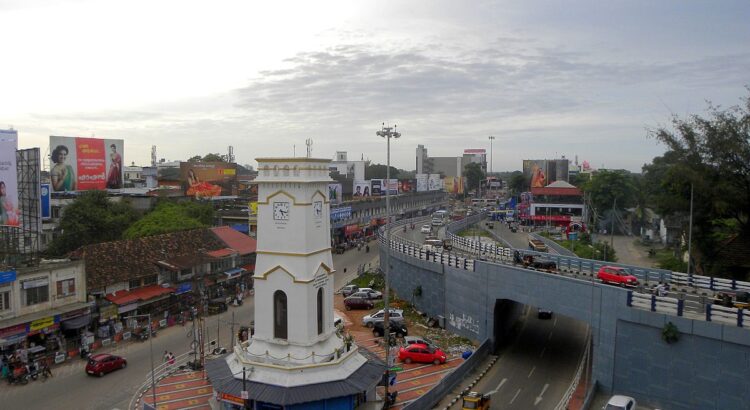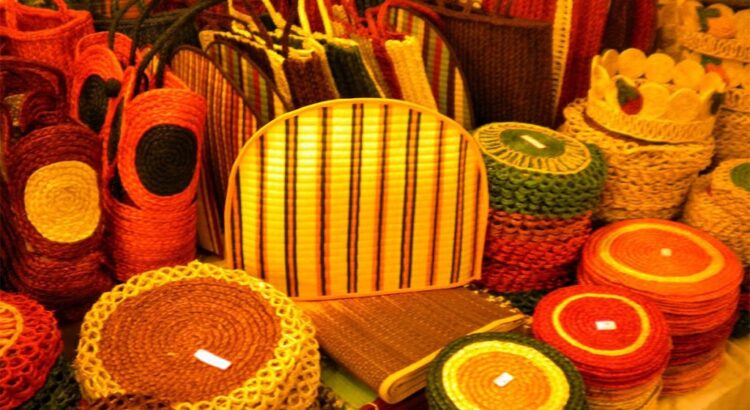Kollam an ancient port city in Kerala formerly known as Quilon/Coylang ( Coulão in Portuguese ) is situated on the Laccadive Sea coast of the Indian state of Kerala. You can reach Kollam Via Road, Train or Ship and it is located 70 KM to the north of Trivandrum, the capital city of Kerala. It is 75 KM drive from Trivandrum International Airport to Kollam for those who love to visit the city. Kollam is also know as the Land of Cashew Nuts, Coir, Black-pepper, Seafood, Backwaters and it is often referred to as the Cashew Capital of the world. The name of Malayalam Calendar ( Kolla-Varsham ) originated from Kollam. Kollam kandavanu illam venda is a proverb in Malayalam which literally means for the one who has seen Quilon, he doesn’t need his home anymore.
TOP 40 PLACES TO VISIT IN KOLLAM
- KOLLAM BEACH
- VAADI FISHING HARBOUR
- TANGASSERI BREAKWATER
- TANGASSERI FORT
- TANGASSERI LIGHT HOUSE
- THANNI BEACH
- AZHIKAL BEACH
- AYIRAMTHENGU
- ASHTAMUDI LAKE
- OCHIRA TEMPLE
- KATTIL MEKKATHIL
- KRISHNAPURAM PALACE
- MUNROE ISLANDS
- SHAKTHIKULANAGARA/NEENDRAKARA FISHING HARBOUR
- KOTTARAKKARA GANAPATHI TEMPLE
- PALARUVI
- THENMALA
- SCHENDURENEY
- ROSEMALA
- PINNACLE VIEW POINT
- AMBANADU
- MALAMEL
- KOTTUKAL CAVE TEMPLE
- KUDUKATHU PARA ECOTOURISM
- KULATHUPUZHA TEMPLE
- ACHANKOVIL
- PUNALOOR BRIDGE
- MEENPIDI PARA
- VALLIKAVU
- ALUMKADAVU
- MEENMUTTY WATERFALLS
- PANMANA ASHRAMAM
- KOTTARAKKARA TEMPLE AND KATHAKALI MUSEUM
- POLICE MUSEUM
- 8 POINT ART CAFE
- ADVENTURE PARK
- JATAYU EARTH CENTRE
- Vattathil Waterfalls
- Oliyarik Waterfalls
- Kumbhavurutty Manalar Waterfalls
After AD 23, so many merchants, travellers, explorers, missionaries, apostles and army commanders visited Quilon, as Quilon was the most important trading port in India. Pliny, Saint Thomas, Mar Sabor and Mar Proth, Marco Polo, Ibn Battuta and Zheng He are a few of them. Pliny had mentioned about the port city of Quilon much accurately. Kollam is the most historic and ancient settlement in Kerala, probably in South India. In 822 AD, two East Syriac bishops Mar-Sabor and Mar-Proth, settled in Quilon with their followers. After the beginning of Kollam Era (824 AD), Quilon became the premier city of the Malabar region ahead of Travancore and Cochin. Kollam Port was founded by Mar Sabor at Thangasseri in 825 AD. Migration of East Syriac Christians to Kerala started in 4th century. Their second migration is dated to the year AD 823 and that was to the city of Quilon.
The Portuguese were the first Europeans came to the city of Quilon. They came as traders and established a trading centre at Tangasseri in Quilon during 1502. The then Queen of Quilon first invited the Portuguese to the city in 1501 for discussing about spices trade. But they refused that due to Vasco da Gama’s close relations with the Raja of Cochin. Later the Queen negotiated with the Raja and he permitted to send two Portuguese ships to Quilon to buy fine quality pepper. In 1503, the Portuguese General Afonso de Albuquerque went to Quilon as per the Queen’s request and collected required spices from there. Albuquerque heard that the Zamorin of Calicut was preparing a Calicut fleet of some 30 ships for Quilon. Afonso de Albuquerque left Cochin and hurried down to Quilon himself. Albuquerque signed a treaty of friendship with the Royal family of Quilon and established a factory there in 1503 itself, placing it under factor António de Sá, with two assistants and twenty armed men to protect the factory. That voyage was the beginning of trade relations between Portugal and city of Quilon, which became the centre of their trade in pepper. Soon, Quilon emerged as the richest town of the entire Malabar coast. The trade relation between Quilon and Portuguese got set back due to an insurrection happened at the Port of Quilon between the Arabs and the Portuguese. The captain of one of the Portuguese fleets saw an Arab ship is loading pepper from the port and that burst fighting between them. Aftermath, the battle started between them. 13 Portuguese men were killed including António de Sá and the St. Thomas church was burned down. To prevent further devastation, the Queen of Quilon signed a treaty with the Portuguese and as a result, they got customs tax exemption and monopoly over the spice and pepper tread with Quilon. The royal family of Quilon agreed to rebuild the destroyed church. The Portuguese conquered Quilon till 1661. They fought with the Arab traders and captured a huge amount of gold after killing more than 2000 Arab traders.
With the arrival of the Dutch and their peace treaty signing with Quilon, the Portuguese started losing their authority on Quilon and later, Quilon officially became a Dutch protectorate. Dutch arrived Quilon in the year 1658 and signed a peace treaty in 1659. Thus Quilon became the official protectorate of the Dutch and their officer in-charge, Rijcklof van Goens, placed a military troop in the city to protect it from probable invasions from Portuguese and the British. The West Quilon region including Tangasseri named as ‘Dutch Quilon’ then. St.Thomas Fort (once known as Fortaleza da São Tomé) was built by the Portuguese under Afonso de Albuquerque for the protection of the newly developed trade. In 1505 the Portuguese established a trading port here, and in 1518 established its sovereignty through the construction of Fort St. Thomas. Later in 1661 the town and the fort were handed over to the Dutch who made it the capital of Dutch Malabar. The Dutch occupied the fort for several years.
The Battle of Quilon was fought in 1809 between a troop of the Indian kingdom of Travancore led by the then Dalawa (prime minister) of Travancore, Velu Thampi Dalawa and the British East India Company led by Colonel Chalmers at Cantonment Maidan in Quilon. The battle lasted for only six hour and was the result of the East India Company’s invasion of Quilon and their garrison situated near the Cantonment Maidan. The company forces won the battle while all the insurrectionist who participated in the war were court-martialed and subsequently hanged at the maidan. Later, Venad Kingdom was completely merged with the Kingdom of Travancore during the rein of Marthanda Varma and Kollam remained as the capital of Travancore Kingdom. The Government Secretariat was also situated in Kollam till 1830s. It was moved to Thiruvananthapuram during the reign of Swathi Thirunal
Chamakada is an export and commercial hub of Kollam an ancient port city. The ancient Kollam city was one of the famous trade centers. Marco Polo, the great Venician traveller, who was in Chinese service under Kublahan in 1275, visited Kollam and other towns on the west coast, in his capacity as a Chinese mandarin. He pointed out that Old Kollam is the only town in west coast with multi-story buildings. We can see those buildings in the downtown area of Kollam even now. He found Christians and Jews living in Coilum (Kollam). He also found merchants from China and Arabia. He has given a detailed account of Kollam in his writings, extracts of which are reproduced in the Travancore Manual. Remnants of stone age was also found from Kollam an ancient port city in kerala, that reveals the importance of Kollam city. Kollam Canal is a bustling part of Trivandum-Shornur Canal (TS Canal) system, ideal for tourism and container transportation. The Inland Navigation Department is having jurisdiction over Kollam Canal. Kollam Canal was an arterial inland waterway of old Quilon city. It was the major trade channel of Travancore state that time. Giant cargo vessels ferrying different types of goods through this canal were a common view of Quilon city those days. Chamakada served as a harbour for unloading the goods brought by these vessels to Kollam. Processed cashew from various factories in the Cashew Capital along with other goods from the wholesale markets of old Quilon city for export was the major export material handled at Chamakada that time.
Kollam is an ancient port city in Kerala and a paradise for tourists with its lovely beaches, lakes, backwaters, temples, heritage zones, food, art & crafts, hill stations, waterfalls, wildlife zones, ecotourism and adventure zones. Art forms like Kathakali and Karadi kali is very famous in Kollam. Crafts forms like Hay Art, Coconut Shell Products and Nettippattam is quite unique.
Contact for more Info: +91 474 276 9999
Discover more about Kollam at :
www.kollamtourism.org , www.discoverkollam.com
